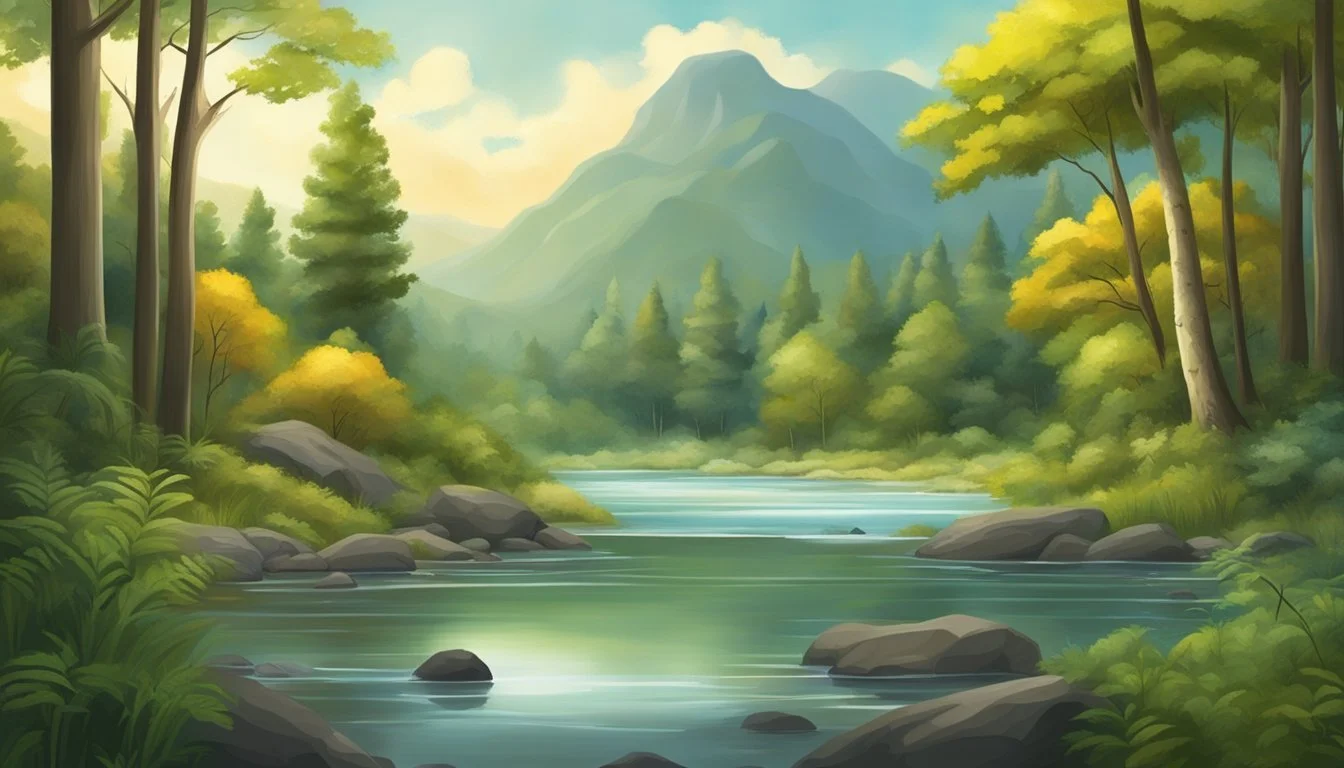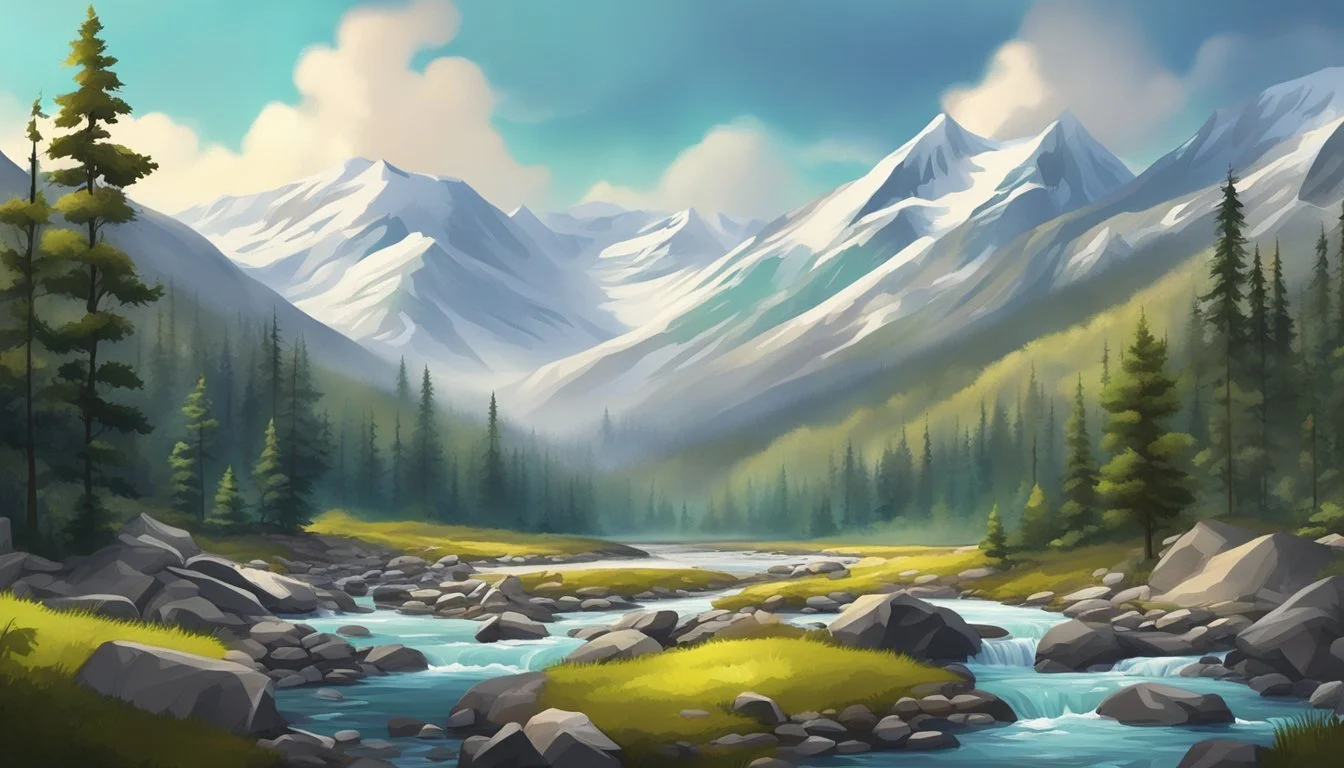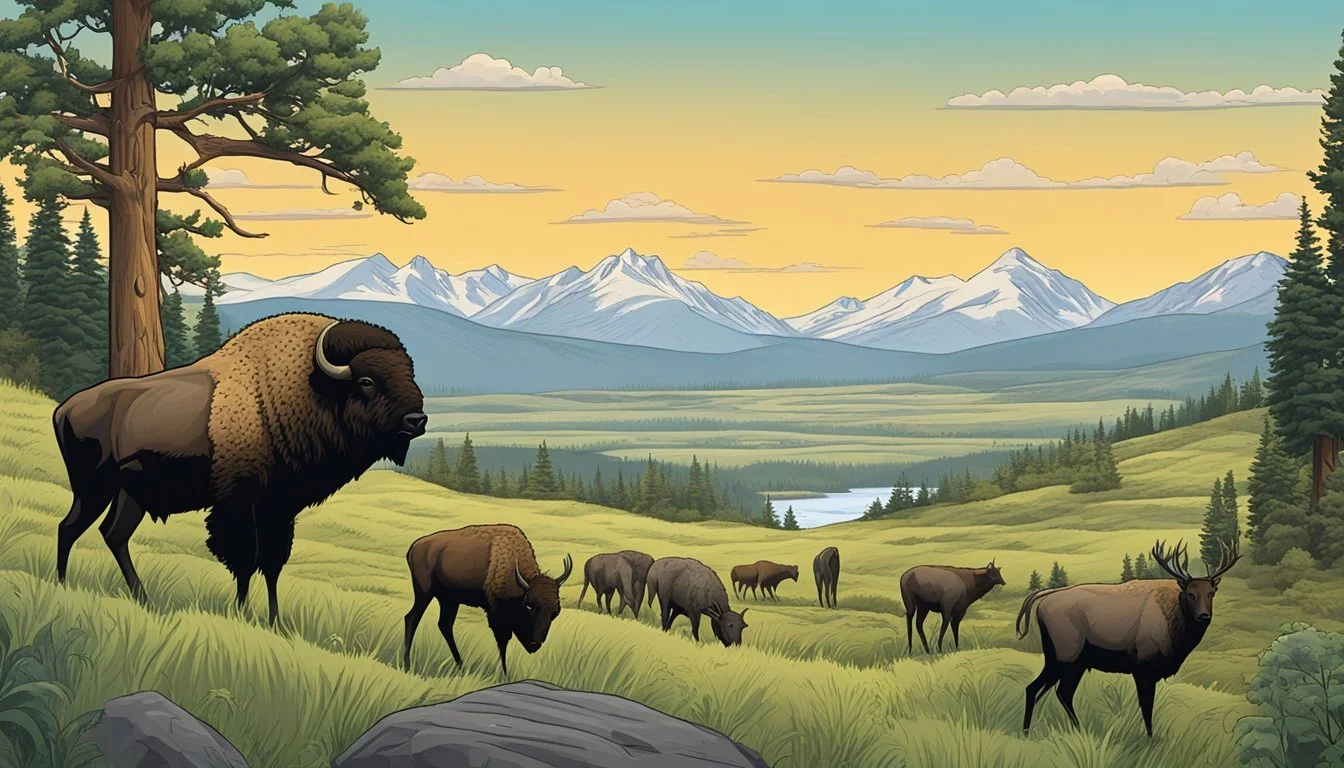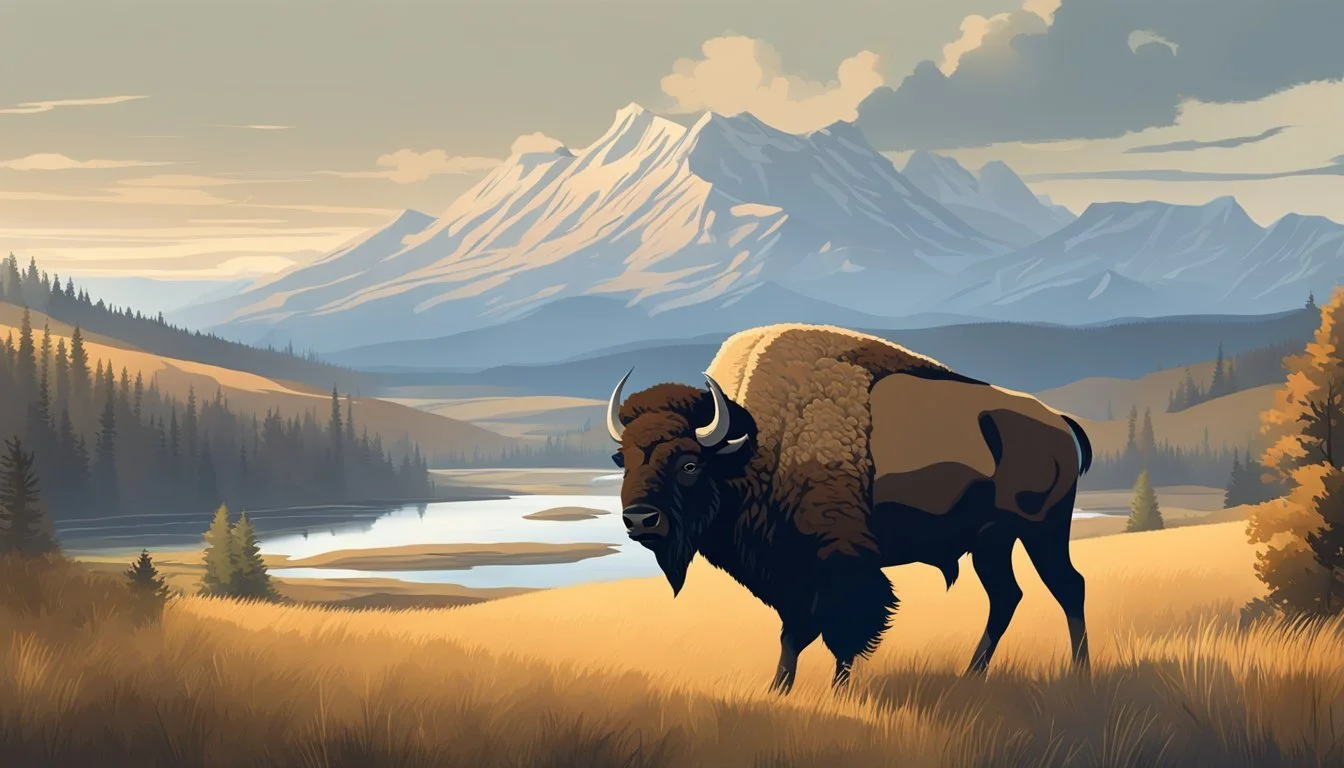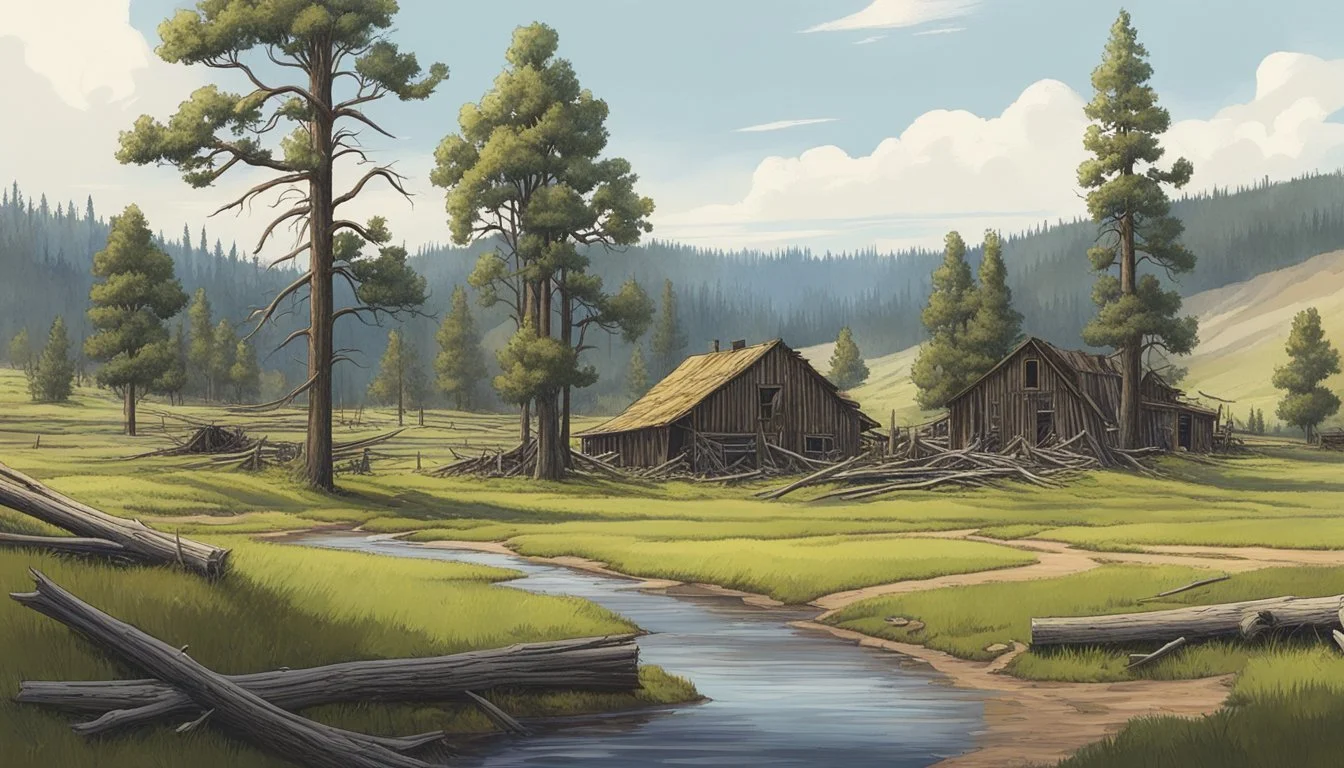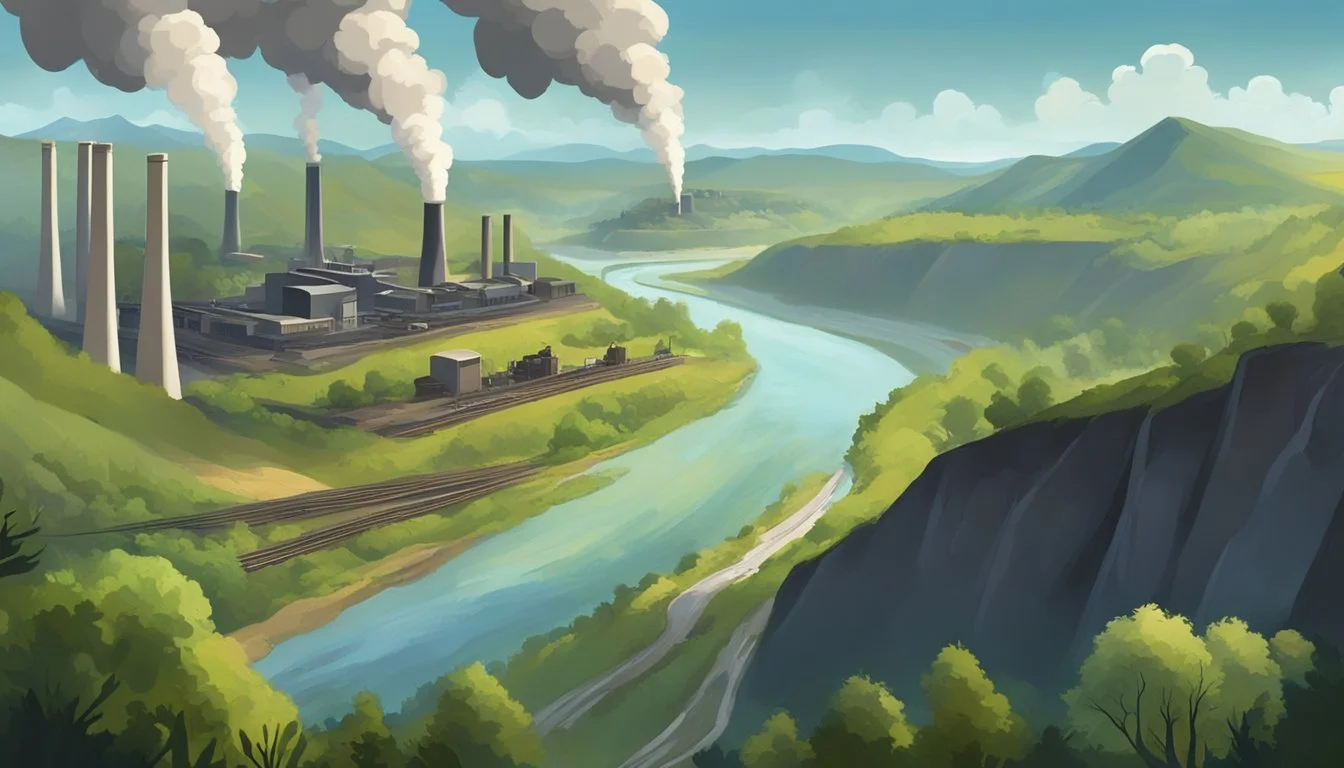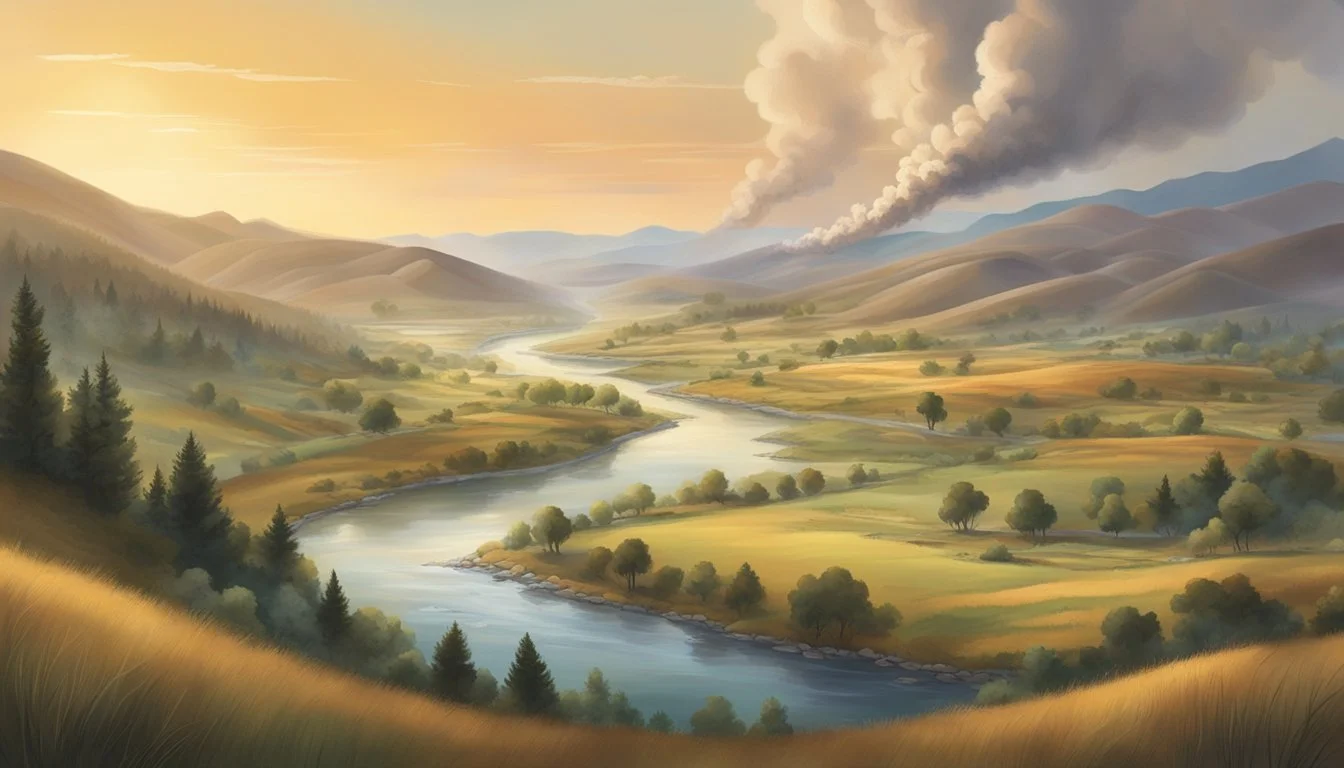8 Times Yellowstone Tackled Environmental Issues
Exploring Conservation Themes in Modern Western Drama
The hit TV series "Yellowstone" has captivated audiences with its dramatic portrayal of ranching life in Montana. Set against the backdrop of the iconic national park, the show delves into complex issues facing the American West. While family drama and power struggles drive the plot, environmental themes play a significant role in shaping the narrative and characters' motivations.
"Yellowstone" uses its platform to highlight pressing ecological concerns, from land conservation to wildlife management, bringing these topics to a mainstream audience. The show's exploration of conflicts between ranchers, developers, and conservationists reflects real-world tensions in the region. By weaving environmental storylines into its fabric, "Yellowstone" prompts viewers to consider the delicate balance between human interests and nature preservation in one of America's most treasured landscapes.
1) Driving Cattle Over Pristine Land
Yellowstone depicts cattle drives across Montana's untouched landscapes, highlighting the delicate balance between ranching and environmental preservation. The show portrays the Dutton family moving their herds through pristine wilderness areas, raising questions about the impact on fragile ecosystems.
These scenes showcase the stark contrast between the necessary economic activities of ranching and the desire to maintain unspoiled natural habitats. Viewers witness cattle trampling native vegetation and disturbing wildlife as they pass through.
The series doesn't shy away from showing the environmental consequences of these drives. Eroded riverbanks, damaged grasslands, and disrupted animal habitats are all presented as byproducts of the cattle's journey.
Yellowstone uses these moments to spark discussions about sustainable ranching practices and the importance of land stewardship. The show presents characters grappling with their role as both ranchers and protectors of the land they depend on.
Through stunning cinematography, Yellowstone captures the beauty of Montana's wilderness while also drawing attention to the environmental challenges posed by large-scale cattle operations in sensitive areas.
2) Rip Wheeler's Conservationist Stance
Rip Wheeler, Yellowstone's tough ranch foreman, displays a surprising conservationist side beneath his rugged exterior. His actions often reflect a deep respect for the land and its wildlife.
Rip's approach to conservation is practical and rooted in his ranching experience. He understands the delicate balance between human activity and nature's needs on the Yellowstone ranch.
In several episodes, Rip demonstrates his commitment to preserving the natural habitat. He enforces strict rules against poaching and unauthorized hunting on Dutton land.
Rip also oversees sustainable grazing practices, ensuring the cattle don't overburden the land. His methods help maintain the health of the grasslands and protect local ecosystems.
While not overtly environmentalist, Rip's actions speak louder than words. He teaches younger ranch hands the importance of respecting the land and its resources.
Rip's conservationist stance aligns with the Dutton family's goal of preserving their vast ranch. His efforts contribute to maintaining the ecological balance of the Yellowstone area.
3) Beth Dutton vs. Corporate Polluters
Beth Dutton, portrayed by Kelly Reilly in Yellowstone, stands as a formidable opponent against corporate polluters. Her character embodies the show's commitment to addressing environmental concerns through compelling storytelling.
As the Dutton family's fiercest protector, Beth uses her corporate expertise to combat companies threatening Montana's pristine landscapes. She employs aggressive tactics and sharp business acumen to outmaneuver those who would exploit the land for profit.
In several episodes, Beth confronts executives and board members of companies responsible for environmental damage. She leverages her insider knowledge of corporate operations to expose their harmful practices and force accountability.
Beth's battles against polluters highlight the complex relationship between big business and environmental stewardship. Her character serves as a conduit for the show to explore themes of corporate responsibility and the preservation of natural resources.
Through Beth's storylines, Yellowstone illustrates the ongoing struggle between economic development and environmental protection in the American West. Her unwavering stance against corporate polluters resonates with viewers concerned about real-world ecological issues.
4) Wildlife Preservation in Montana
Yellowstone showcases Montana's diverse wildlife and the challenges of preserving it. The series highlights conflicts between ranchers and predators like wolves and grizzly bears, reflecting real tensions in the region.
Several episodes depict efforts to protect endangered species and maintain ecological balance. The Dutton ranch grapples with government regulations aimed at safeguarding wildlife habitats, illustrating the complexities faced by landowners.
The show explores the impact of human activities on animal migration patterns. It portrays the delicate balance between ranching operations and preserving corridors for elk, bison, and other species to move freely across the landscape.
Yellowstone also touches on wildlife management practices, including controlled hunts and relocation programs. These storylines reflect actual conservation strategies employed in Montana to maintain healthy wildlife populations while minimizing conflicts with human activities.
Through its portrayal of Montana's ecosystems, the series raises awareness about the importance of preserving biodiversity. It subtly educates viewers on the interconnectedness of different species and the need for comprehensive conservation approaches.
5) Native American Rights and Lands
Yellowstone addresses Native American land rights through its portrayal of the fictional Broken Rock Indian Reservation. The show highlights historical land disputes between indigenous tribes and the U.S. government.
The series explores the ongoing struggle for tribal sovereignty and the preservation of ancestral territories. It depicts the complexities of modern Native American life, including economic challenges and environmental concerns.
Yellowstone showcases the impact of land encroachment on indigenous communities. The show illustrates how development and resource exploitation can threaten traditional ways of life and sacred sites.
The series also touches on the issue of tribal casino profits and their potential use in reclaiming ancestral lands. While this portrayal has faced criticism for oversimplification, it brings attention to the topic of land reacquisition.
Yellowstone's representation of Native American characters and their connection to the land adds depth to the show's environmental narratives. It underscores the importance of indigenous perspectives in discussions about land use and conservation.
6) Water Rights Battle
Yellowstone delves into the contentious issue of water rights in the American West. The Dutton ranch's struggle to maintain control over its water resources reflects real-world conflicts between landowners, developers, and government entities.
The series portrays the fierce competition for limited water supplies in Montana's arid landscape. It highlights how access to water can determine the viability and profitability of ranching operations.
Through dramatic confrontations and legal battles, Yellowstone illustrates the complex web of historical claims, laws, and regulations surrounding water rights. The show depicts how these conflicts can escalate into heated disputes and even violence.
Yellowstone's portrayal of water rights issues brings attention to the ongoing challenges faced by ranchers and farmers in the region. It showcases the tension between traditional agricultural practices and modern development pressures.
The series also touches on the environmental implications of water usage and allocation. It raises questions about sustainable water management and the long-term impacts of current practices on ecosystems and wildlife.
7) Deforestation on the Dutton Ranch
The Yellowstone series touches on deforestation issues within the Dutton Ranch storyline. As the family strives to protect their vast property, they face challenges from logging companies seeking to harvest timber from their land.
John Dutton and his children recognize the importance of maintaining the ranch's forested areas. These woodlands provide crucial habitats for wildlife and help preserve the ecosystem balance on their property.
In one episode, the Duttons confront a logging company attempting to encroach on their territory. This conflict highlights the tension between economic interests and environmental preservation in rural Montana.
The show depicts the Duttons implementing sustainable forestry practices on their ranch. They selectively harvest trees while ensuring the overall health and longevity of their wooded areas.
Through these storylines, Yellowstone raises awareness about the impacts of deforestation on ranching communities and local ecosystems. It showcases the delicate balance between utilizing natural resources and maintaining the land's ecological integrity.
8) Coal Mining Impacts
"Yellowstone" touches on the controversial issue of coal mining in Montana. The show depicts the struggle between economic interests and environmental protection.
In one episode, the Dutton family faces pressure from a coal company seeking to expand operations near their ranch. This storyline highlights the potential threats to water quality and wildlife habitats posed by mining activities.
The series also explores the complex dynamics between local communities, Native American tribes, and energy corporations. It showcases how coal mining can create jobs but also disrupt traditional ways of life.
Through character dialogues and plot developments, "Yellowstone" addresses concerns about air pollution and climate change associated with coal extraction. The show presents various perspectives on balancing energy needs with environmental preservation.
By incorporating coal mining into its narrative, "Yellowstone" brings attention to a real-world issue affecting Montana and other Western states. It encourages viewers to consider the long-term consequences of resource exploitation in sensitive ecosystems.
Overview of Yellowstone's Environmental Themes
The hit TV series Yellowstone weaves environmental themes into its gripping narrative of family drama and power struggles. Set against the backdrop of Montana's stunning landscape, the show explores conservation conflicts and the delicate balance between development and preservation.
Narrative Focus on Conservation
Yellowstone tackles pressing environmental issues through its storylines. Land use disputes form a central conflict, pitting ranchers against developers and conservationists. The Dutton family's struggle to maintain their vast ranch highlights the pressures of urban expansion on rural areas.
Water rights emerge as another key theme, reflecting real-world debates over resource management. The show depicts clashes between ranchers, Native American tribes, and government agencies over access to vital water sources.
Wildlife conservation plays a prominent role, with storylines involving wolf reintroduction programs and the protection of endangered species. These plot points mirror actual ecological initiatives in the American West.
Character Perspectives on Nature
Yellowstone's diverse cast of characters offers varied viewpoints on environmental issues. John Dutton, the patriarch, embodies a traditional ranching ethos of responsible land stewardship. His approach often clashes with modern conservation methods.
Beth Dutton represents a more pragmatic stance, balancing business interests with environmental concerns. Her character arc explores the complexities of sustainable development.
Native American characters provide a spiritual connection to the land, emphasizing long-term harmony with nature. This perspective contrasts sharply with the short-term profit motives of corporate interests depicted in the show.
Environmental activists feature prominently, ranging from peaceful protesters to radical eco-terrorists. Their inclusion sparks discussions about the ethics and effectiveness of different forms of environmental advocacy.
Impact of Real-World Environmental Issues
Yellowstone's portrayal of environmental challenges faced by ranchers and local communities has resonated with viewers. The show's depiction of these issues has sparked discussions and raised awareness among its audience.
Influence on Audience Awareness
Yellowstone has shed light on land conservation struggles in the American West. The series showcases conflicts between ranchers, developers, and environmental groups, reflecting real-world tensions.
Viewers have gained insight into issues like water rights, wildlife management, and the impact of tourism on local ecosystems. The show's popularity has brought these topics to a wider audience, potentially influencing public perception.
By dramatizing environmental challenges, Yellowstone has made complex issues more accessible to viewers who might not otherwise engage with such topics.
Collaborations with Environmental Organizations
The show's production team has partnered with conservation groups to ensure accurate portrayals of environmental issues. These collaborations have led to increased awareness of real-world initiatives.
Yellowstone's creators have worked with organizations focused on land preservation and sustainable ranching practices. This cooperation has resulted in storylines that highlight genuine conservation efforts in the region.
The show's impact extends beyond entertainment, as some viewers have been inspired to support environmental causes featured in the series. This demonstrates Yellowstone's potential to motivate real-world action on conservation issues.



